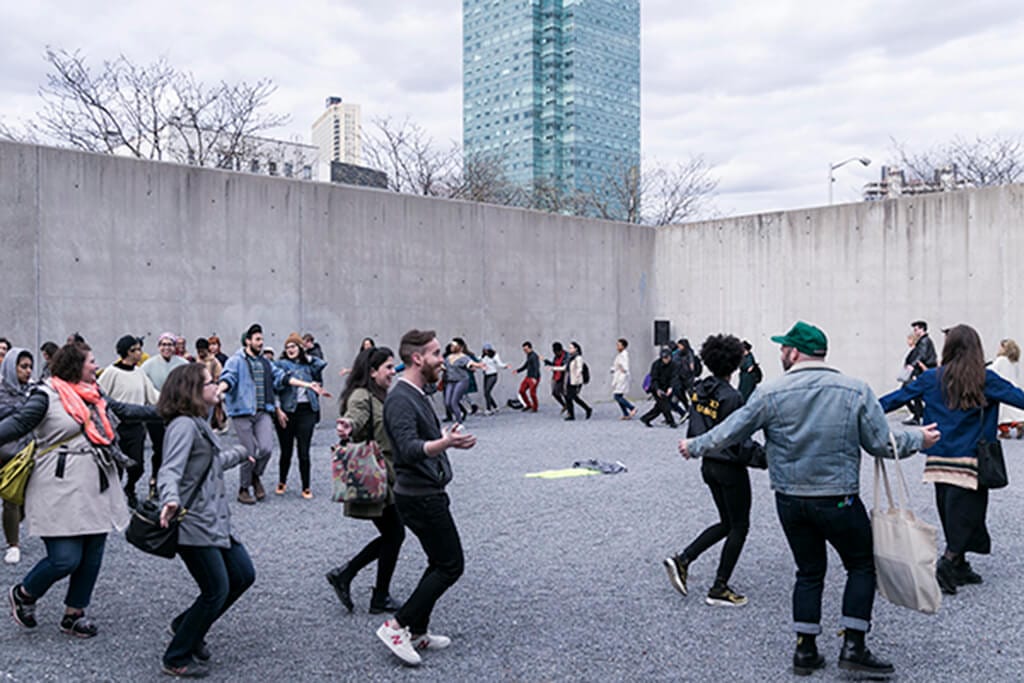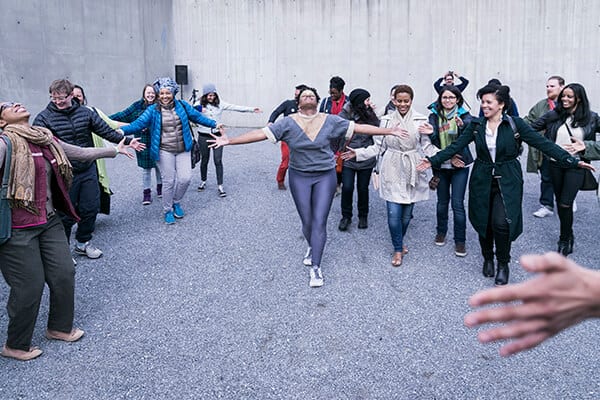When I see that the COIL festival is hosting a dance performance that explores the relationship between “science fiction, disco, astrophysics, and the black American experience,” I am one hundred percent interested. Like most people, I’ve never seen those terms in the same sentence. I need to see DISCOTROPIC and figure out how they can possibly go together.
At 8 PM the audience at the Westbeth Artists Community is shuffled into a black box theater in the basement, which pulses with techno music. In front of us is a projection of a man, wearing a black mesh shirt and tiny pleather shorts, tracing what looks like ash with his feet. It takes me a moment to realize that the actual person is in a separate room from where we’re standing. Some audience members move to get a better look at him. Yet interestingly, more people choose to watch the projected performer. Whenever the dancers venture into one of the side rooms of the space, the video stream reappears on the wall.
The show begins with the four performers doing a long, intense version of what can only be described as aggressive twerking. They even do some serious booty shaking while in a handstand. At this point, it becomes very clear that the women are not wearing bras beneath their shirts. Rather, their breasts move with their bodies as they shake. I can sense that this moment is not intended to be objectifying to women, but empowering. Yet at the same time, I honestly feel a little uncomfortable. Not with the nudity, but with the fact that I’m standing in a majority white audience, watching four black performers do some seriously uninhibited dancing as if we’re observing representatives from some other distant culture.
Yet on reflection, this is the larger point of DISCOTROPIC, which highlights the otherness people of color can feel in a historically majority white culture. However, due to the experimental nature of the performance, in the moment this message is far from clear to me. I have to look at the show notes afterwards to figure out what I’m seeing. Apparently, the performance is inspired by Diahann Carroll, who is a black woman, having been cast in the Star Wars TV movie holiday special as a holographic fantasy, “an illusion that distills the ways in which the black female body has been consumed in mass media: as alien, bodacious, and marginalized.”
Since this is experimental theater, it doesn’t condescend to spelling out its intentions, but I’ll admit that there is more than one moment when it just strikes me as absurd. Towards the end of DISCOTROPIC, a good chunk of time passes while the dancers crawl on their hands and knees, hissing and screaming made-up words. I look around me and see that everyone else in the audience is completely straight-faced. Yes, I get the inchoate rage and alienation. But do others not realize that, seen plainly, everything that’s going on is complete gibberish? Of course, this only makes it seem more absurd. Fortunately, I manage to pull myself together and keep my “serious theater” face on.
If you’re a fan of experimental art that explores queer politics, race, and gender, then this performance will be your cup of tea. Otherwise, you might end up trying to stifle inappropriate laughter.



